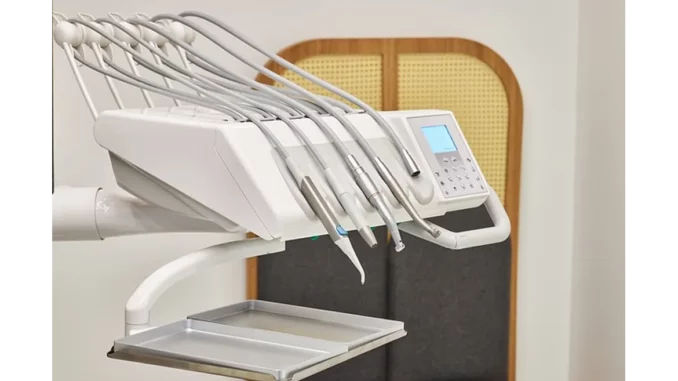
Dental anxiety is an often-overlooked issue affecting millions across the United States, acting as a significant deterrent for many individuals seeking essential dental care. This pervasive anxiety contributes to a cascade of oral health challenges, as individuals avoid regular check-ups and necessary treatments. To further explore this issue and examine how modern technology is reshaping the dental experience, I engaged in a discussion with Sarah Collins, a patient advocate and expert in dental care innovation. Her insights provide a hopeful glimpse into how contemporary advancements are gradually altering perceptions of dental visits.
Sarah Collins recounted her personal journey with dental anxiety, which began in her early years. “I vividly remember the overwhelming dread I felt before each dental appointment,” she shared. “Even as an adult, that anxiety persisted. It wasn’t solely about the physical discomfort; it was the vulnerability of reclining in that chair, the unfamiliar sounds and smells, and the fear of the unknown.” This feeling is shared by around 36% of the U.S. population, with 12% experiencing severe dental fear. Such anxiety often results in missed appointments and unattended dental issues, ultimately leading to deteriorating oral health. “Dental anxiety isn’t merely about teeth,” Sarah explained. “It’s about how your dental health impacts your confidence, your smile, and your social interactions.”
The journey to overcoming dental anxiety often begins with establishing trust—both in one’s dentist and in the overall dental process. Sarah highlighted the critical role of open communication between patients and dental professionals. “When dentists take the time to explain procedures and address patient concerns, it makes a substantial difference. Patients feel more empowered and less like passive participants,” she said.
Fortunately, technology is increasingly pivotal in facilitating this communication and building trust. Innovations such as intraoral digital scanners and advanced radiology tools are redefining the patient experience. “Intraoral scanners are revolutionary,” Sarah remarked. “They replace the uncomfortable mould trays that were a significant source of anxiety for many patients. These scanners are non-invasive and deliver a more precise image of the mouth.” Furthermore, these technological advancements allow patients to visualise their treatment journey. “Seeing a digital model of your treatment plan demystifies the process,” Sarah elaborated. “It transforms the experience from one of fear to one of understanding and anticipation.”
Virtual smile design technology represents another remarkable advancement, enabling patients to preview their potential post-treatment appearance. “It’s empowering,” Sarah noted. “Visualising the results provides patients with a clear goal, turning anxiety into excitement.” Additionally, Sarah underscored the significance of 3D printing in dentistry. “It simplifies the creation of dental appliances and components, reducing wait times and the number of required appointments. It’s about making the entire process more convenient and less stressful for patients.”
Beyond improving practical aspects of dental care, these technologies also address psychological triggers. “For individuals with limited jaw mobility or other conditions, the extended time spent with their mouths open can be a significant trigger,” Sarah pointed out. “Tools that reduce chair time and the necessity for multiple appointments help alleviate some of that anxiety.” The integration of these technologies has notably enhanced diagnostic quality and accelerated treatment solutions, rendering dental care more personalised and efficient. “Patients today are more informed and active participants in their treatment plans,” Sarah observed. “This involvement fosters a sense of ownership over their oral health, diminishing anxiety and building trust.”
For dental professionals, the challenge lies in continuously adapting to and effectively integrating these technologies. “It’s not just about possessing the latest gadgets,” Sarah cautioned. “It’s about understanding how these tools add value to both patients and staff, and how they can be employed to create a more patient-centric approach.” While dental anxiety remains a substantial barrier for many, the landscape is evolving. Emerging technologies are transforming the dental experience, making it more transparent, efficient, and less daunting. As Sarah eloquently expressed, “The objective is to transform the dental chair from a place of fear into a place of healing and empowerment.”


Be the first to comment